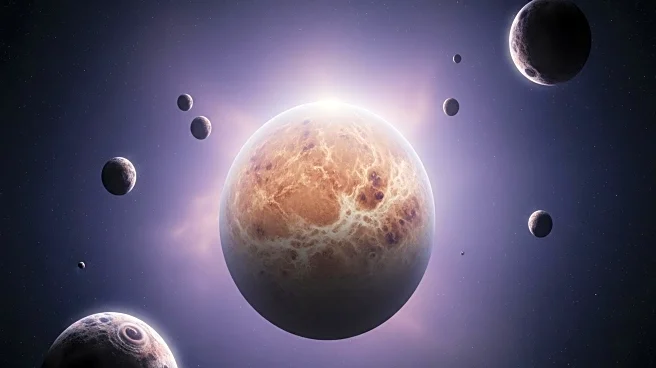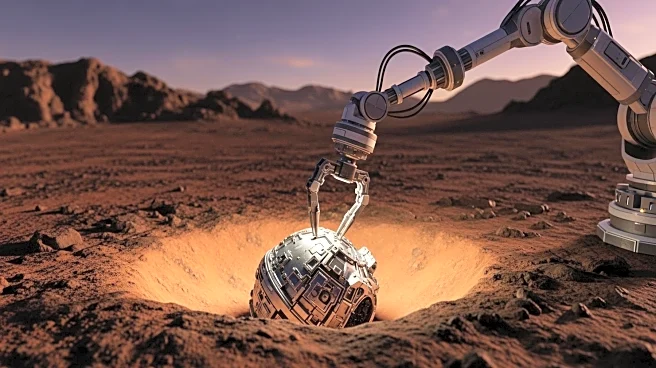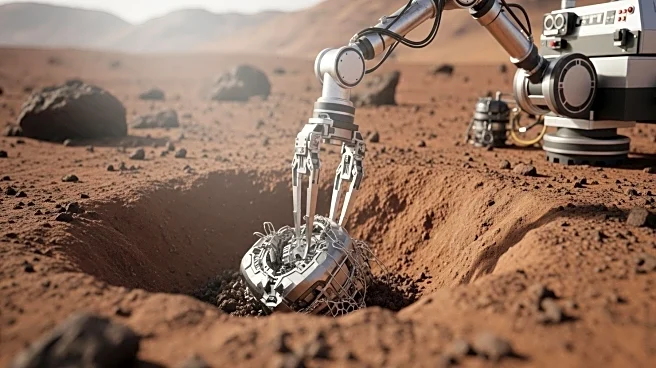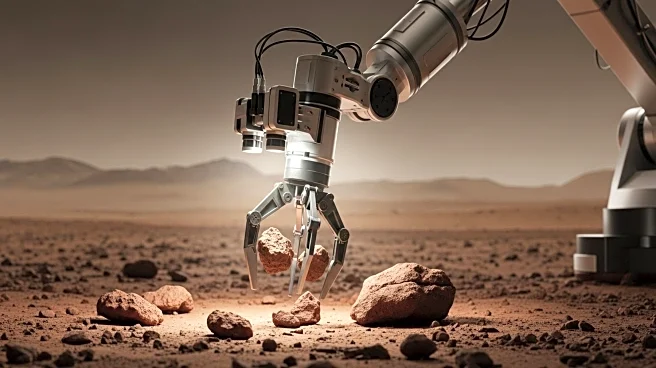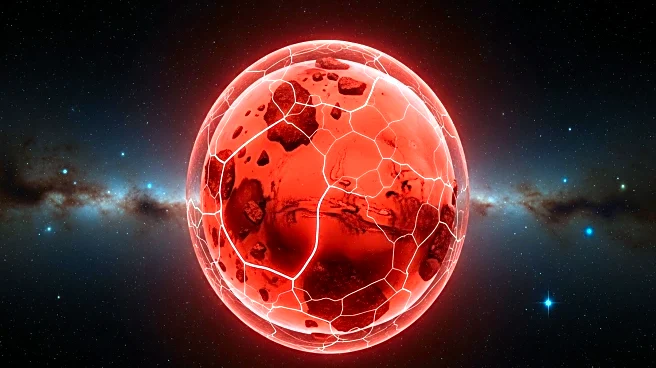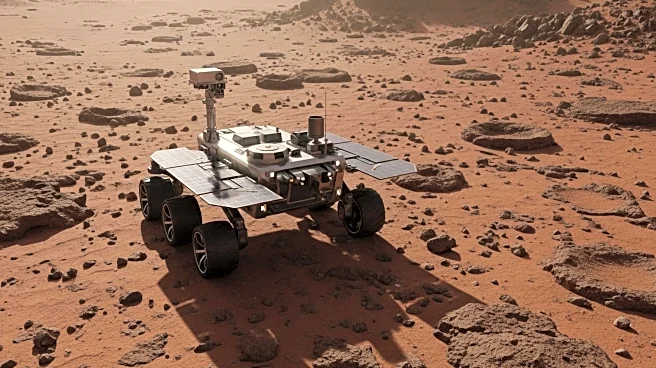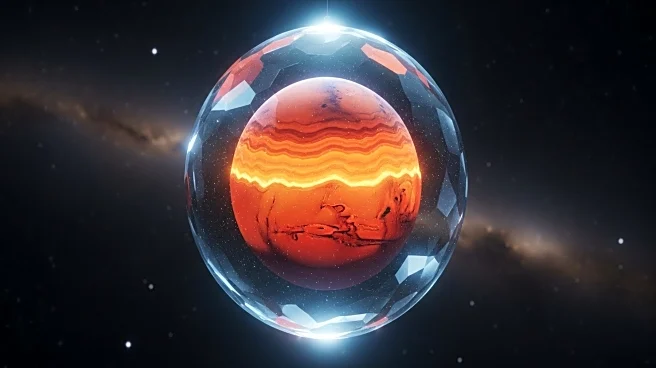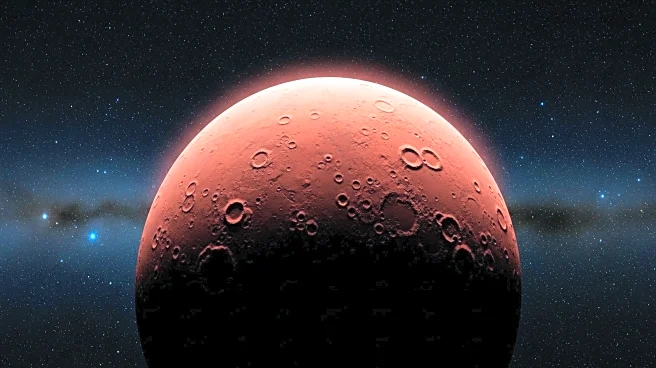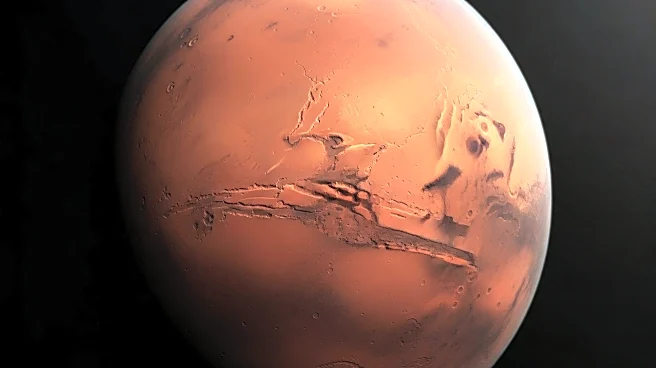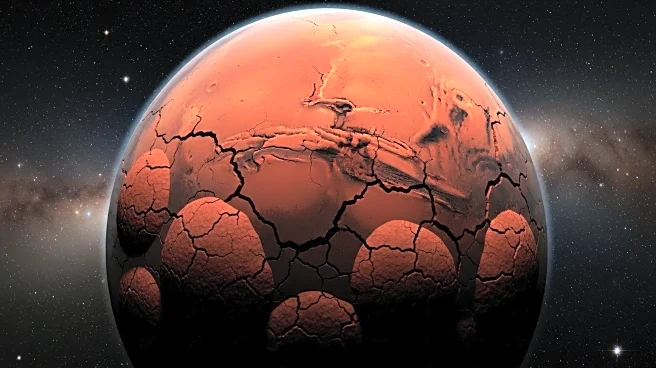What's Happening?
A new study from the University of Zurich suggests that Venus may have been struck by objects the size of Mars, potentially explaining its unique characteristics. Researchers used Smooth Particle Hydrodynamics simulations to model the impact of large celestial bodies on Venus. The study proposes that such impacts could account for Venus's slow, retrograde rotation and lack of a moon. The findings indicate that these collisions might have significantly influenced Venus's geological and thermal history, leading to its current state.
Why It's Important?
Understanding the history of Venus is crucial for planetary science and could provide insights into the formation and evolution of other planets, including Earth. The study's findings may help explain why Venus, despite its similarities to Earth, has such a different environment. This research could also inform future missions to Venus, as scientists seek to explore its atmosphere and surface. The implications of massive impacts on planetary development could influence theories about the early solar system and the conditions necessary for life.
What's Next?
Further research and simulations are likely to be conducted to refine the understanding of Venus's history. Space agencies may consider these findings when planning future missions to Venus, potentially focusing on areas that could provide evidence of past impacts. Collaboration between international space organizations could enhance the study of Venus and its role in the solar system.
